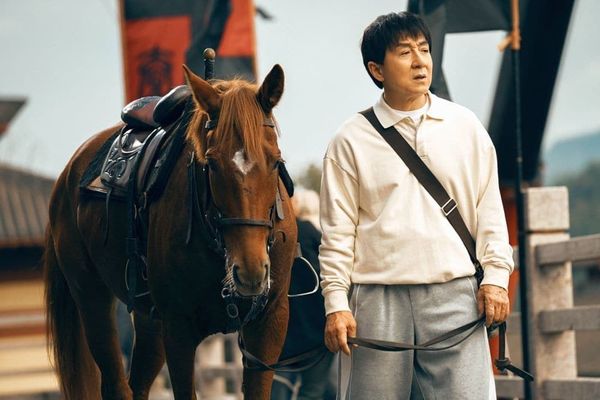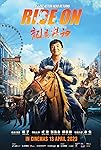Eye For Film >> Movies >> Ride On (2023) Film Review
Ride On
Reviewed by: Jennie Kermode

In the annals of legendary stunt performers, there are few to compare with Jackie Chan. That said, part of the reason for his success is that he can also act, and as he has grown older he has increasingly focused on this, moving away from the really demanding stunt work. In this sentimental but nonetheless enjoyable yarn by Larry Yang, he plays an ageing stuntman. It’s an opportunity to reflect on his own past and pay respect to the traditions of an industry now dramatically altered by CGI – to honour the people who devoted their lives to it (sometimes losing them in the process), and to likewise honour stunt animals.
Chan’s character, Luo Zhilong, lives on a former studio lot with his beloved horse, Red Hare. We see in flashback how he saved the horse from death when it was born with a twisted leg, and how the two formed an intense, instinctive bond. Now they work together as street performers, scraping a living – but when ownership of the old lot changes and Red Hare is listed amongst the assets, Luo realises that he will need a lot more money to keep the two of them together.
It’s here that fiction and real life starkly diverge. Chan has a real life daughter from whom he has been estranged for several years (which she attributes to homophobia, saying that he objected to her marriage to a woman). In the film, he also has a daughter he’s estranged from – Liu Haocun’s Bao – but here there is a clear attempt at reconciliation. Luo has been largely absent from her life from early childhood, and there’s a reason for that, but he has never shared it with her. Now that he needs help, he goes looking for her. She’s a law student. Can she help him to hold onto the horse whom he refers to as her brother? She’s hesitant but her fiancé, Mickey (Kevin Guo), a recently qualified lawyer, wants to be able to introduce her father to his parents so they will agree to the marriage, so there is a deal to be struck.
What follows is a fairly formulaic story, interrupted by Luo’s efforts to train Red Hare so that he can work as a stunt horse and help with the fundraising efforts. He also, briefly, tries to train Mickey, worrying that he needs to be more of a man if he is to protect Bao. In both cases there are entertaining nods to early films like Drunken Master in which his characters were the ones being trained. Times have indeed changed, however, and Bao worries that he’s putting Red Hare at risk, pointing out that the horse can’t consent as he can. Flawed CGI ensures that although the stunts the horse does are still thrilling, we don’t need to worry about hypocrisy on the part of the filmmakers: he’s not at risk in real life.
Luo has to learn how to manage his ego and put the needs of others first sometimes.Bao has to acquire an understanding of her father, which she does in part by watching clips of his past stunt work: a collection of some of Chan’s greatest works from other films. Along the way there are occasional fights to ensure that Chan’s more traditionalist fans don’t go away empty-handed. These include a great set piece in his partially constructed house which recalls a classic Buster Keaton trick in its use of ladders. It’s far from the most spectacular work that Chan has done, but it’s still great fun to watch.
As for the horse (who goes uncredited, but the rumour is that Red Hare – or rather the Chinese term therefore – is his real name), he’s a real find. Some animals just get the concept of acting, and he’s clearly one of them. In one scene, which depicts a film within the film, he even does a good job of conveying bad acting. His repertoire of tricks is rather limited but he’s wonderful at conveying emotion, and Yang uses this to great effect. Chan may be coming to the end of his career but one hopes that Red Hare’s is just beginning.
Reviewed on: 19 Oct 2023

















